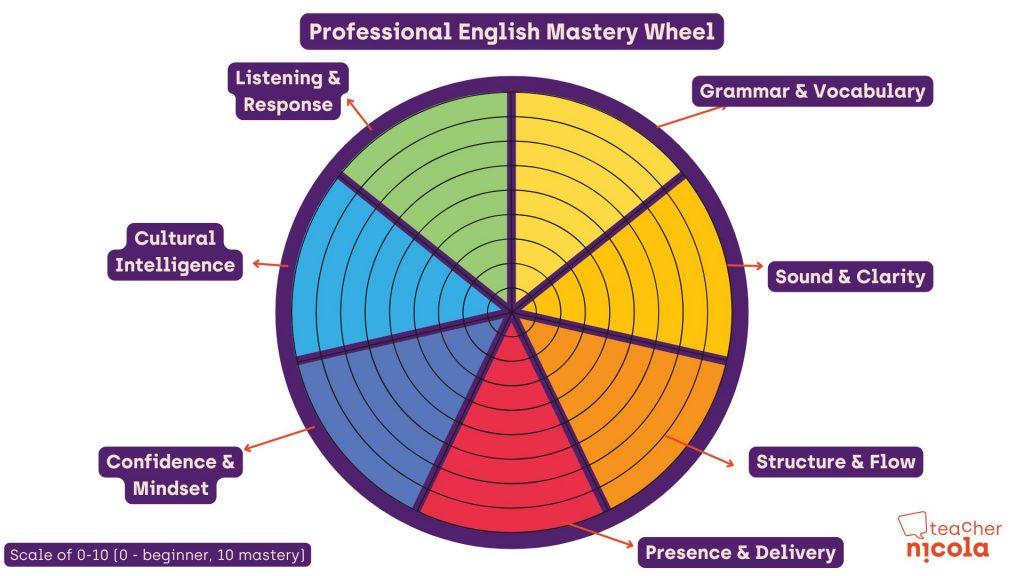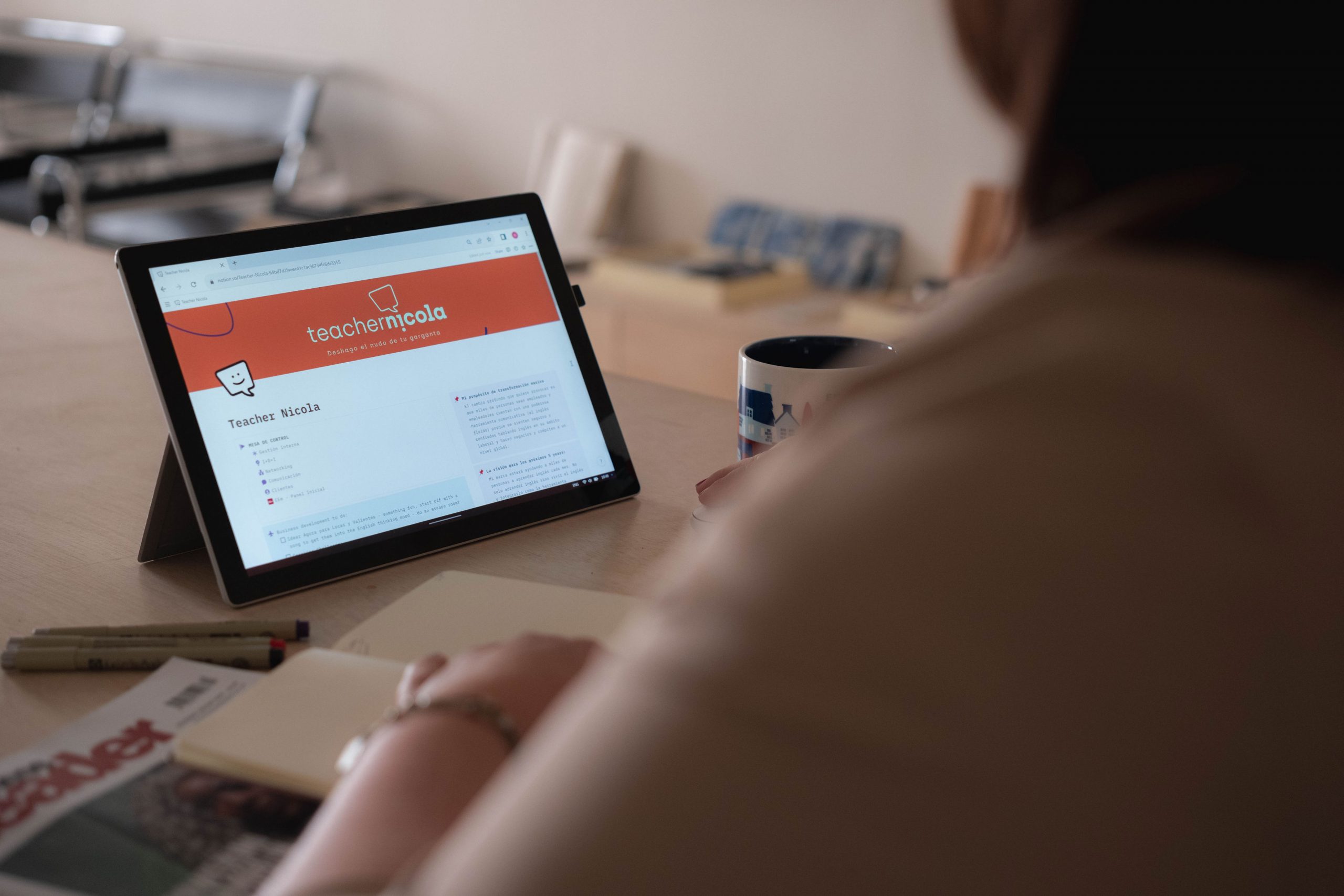In today’s global workplace, being able to communicate in English is no longer just a competitive advantage—it’s a core skill. But what if traditional language learning is failing the very professionals who need it most?
After a decade of working with ambitious individuals in corporate, startup, and international environments, I saw a pattern: many of my clients had passed B2, C1, and even C2 level English exams. They «knew» English. And yet, they still struggled to speak with confidence in meetings, to present clearly under pressure, or to express themselves naturally in networking settings.
Why?
Because traditional methods focus on language as a system. Not on communication as a human act.
That’s why I created the Professional English Mastery Wheel: a clear, human-centred framework for mastering English at work—not just on paper, but in real life.
What is the Professional English Mastery Wheel?
The Mastery Wheel is a holistic model built on seven interconnected skills that go beyond vocabulary and grammar. It was designed to help professionals:
- Identify the areas truly holding them back
- Focus their learning where it matters most
- Grow in confidence, clarity, and credibility
It’s not a level. It’s not a test. It’s a map.
And like any map, it helps you navigate complexity with clarity.

The 7 Areas of the Mastery Wheel
1. Grammar & Vocabulary
Still essential. But not the whole picture. This pillar looks at how you build accurate and flexible sentences for real-world contexts. It’s about function, not perfection.
2. Sound & Clarity
This includes pronunciation, rhythm, and intonation. Can others understand you easily? Are you mumbling, over-articulating, or speaking in a monotone? We explore the sound of your message.
3. Structure & Flow
Organising your ideas matters. This area focuses on how you structure your speech or writing so it flows logically and is easy to follow—especially when presenting or explaining complex ideas.
4. Presence & Delivery
How do you show up when you speak? This pillar is about non-verbal communication, energy, voice modulation, and making your message land. This is often where charisma and leadership are felt.
5. Confidence & Mindset
You can’t grow if fear is in the driver’s seat. This part of the wheel deals with nervous system regulation, imposter syndrome, perfectionism, and fear of judgment. Because communication is emotional, not just technical.
6. Cultural Intelligence
Understanding how communication styles differ across cultures is key in global business. We address tone, directness, small talk, and more, so you can adapt without losing authenticity.
7. Listening & Response
This is about active listening, processing fast speech, and responding thoughtfully under pressure. Good listeners make great communicators.
The Science Behind the Wheel
The Wheel is grounded in:
- Second Language Acquisition theory: especially Krashen’s affective filter hypothesis and the importance of input + emotional safety
- Cognitive load theory: real-time communication requires more than recall—it demands coordination of skills
- Embodied cognition: how our posture, tone, and movement influence memory, confidence, and expression
- Neurodiversity-informed practices: respecting different processing speeds and communication styles
- Sociolinguistics: recognising that accent, code-switching, and identity all play into professional communication
Who is the Wheel for?
- Professionals who feel «stuck» despite years of learning
- People preparing for high-stakes presentations, interviews, or conferences
- Teams that want to build real communicative confidence (not textbook fluency)
- Coaches and educators seeking a more human approach to language learning
What Happens Next?
I’m currently offering:
- A free self-assessment tool based on the Wheel
- A series of targeted Sprints to help you improve specific areas
- An evolving Vault platform for self-study and community-based practice
This isn’t just a framework. It’s a movement. One that puts humanity back at the centre of professional English learning.
Because in today’s world, being fluent isn’t about sounding like a native. It’s about sounding like yourself.
Welcome to the Mastery Era.
by Nicola Linde (Teacher Nicola)
Creator of the Professional English Mastery Wheel & Founder of Wolf Bridge Training


